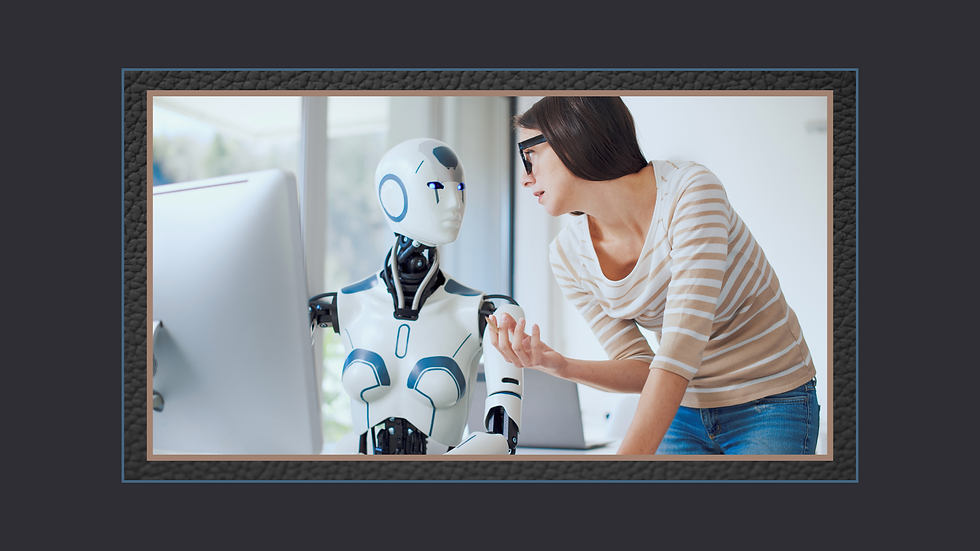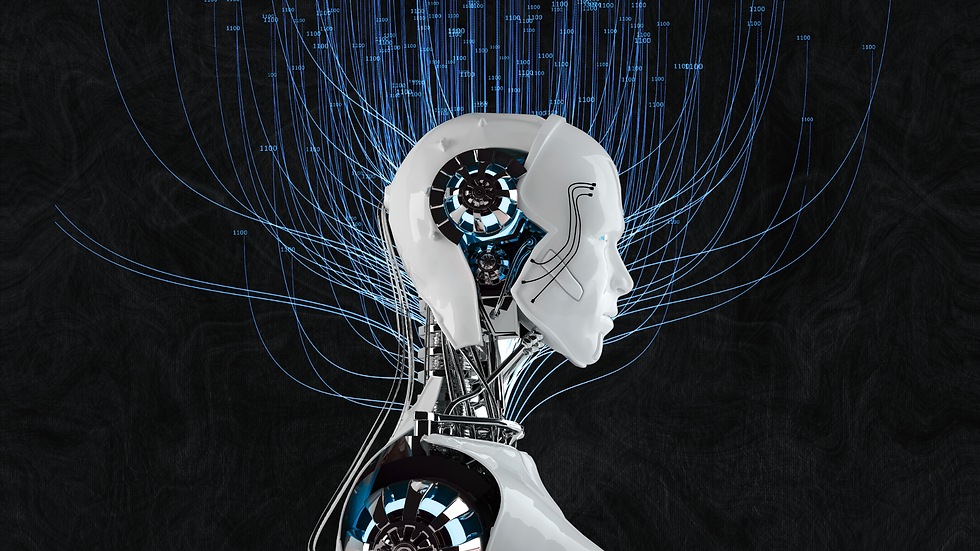What AI Can’t Do for Marketers: And Why That’s Great News!
- Team Social Depot

- Jul 19
- 5 min read
Updated: Jul 24

AI can write your email copy, schedule your posts, and generate 37 hashtags in the time it takes you to scroll past one LinkedIn humblebrag. But can it truly connect with your audience? Can it understand when to pause, pivot, or push forward?
Marketers everywhere are sprinting to keep up with AI — and understandably so. But in the rush to automate, replicate, and accelerate, we’re overlooking something important: AI has limits. And that’s not a threat. That’s an opportunity.
Let’s talk about what AI can’t do, and why that’s your competitive advantage.
Why Everyone’s Obsessed With What AI Can Do
There’s no denying it: AI is impressive. It can:
Generate social posts, captions, emails, and blogs
Analyze customer behavior and recommend actions
Personalize offers at scale
Automate repetitive tasks from scheduling to follow-up
Repurpose content across channels
All of that? Wildly useful. But this flood of AI marketing tools — especially with the rise of cutting-edge applications like Agentic Marketing: How AI Agents are Revolutionizing Digital Marketing and Agentic Social Media Marketing: How AI Agents are Revolutionizing Brand Strategy has created a powerful illusion: that marketing can run on autopilot now. That a prompt is the same thing as a strategy. That creative work is just pattern recognition.
It’s not.
To put it simply, here’s a quick look at what AI in marketing is crushing and where humans still reign supreme:
Task | AI Can Do It? | Humans Still Do It Better? | Why It Matters |
Write social media captions | ✅ | ☑️ | AI is fast, but lacks tone and nuance |
Schedule and automate posts | ✅ | 🚫 | Great for saving time |
Analyze user behavior | ✅ | 🚫 | Machines beat humans at data crunching |
Create empathetic messaging | ❌ | ✅ | Empathy requires context and emotional IQ |
Tell authentic brand stories | ❌ | ✅ | Humans craft lived experiences |
Make ethical marketing decisions | ❌ | ✅ | AI lacks moral judgment |
Spot off-brand creative | 🚫 | ✅ | Taste and gut instinct still win |
Personalize based on data | ✅ | ☑️ | Works best with human QA + oversight |
What AI Can’t (and Probably Won’t) Do Well
Okay, now that we've seen AI's highlight reel, let's get to the juicy bits – what it can't (and probably won't ever) do well.
Here’s what separates the bots from the brands that actually stick.
1. Intuition
You’ve seen it before: The numbers look fine, but something feels off. Or maybe the data doesn’t yet support your hunch, but your gut’s been right before.
That’s intuition. It’s not just guessing. It’s the accumulation of years of pattern recognition, market behavior, and brand experience, the kind AI can’t replicate without... being you. It can't magically understand a new marketing trend before the data catches up.
And it matters. A lot.
2. Taste
AI can write copy, but it doesn’t know when to stop writing. It’s like that friend who just keeps talking after they’ve made their point. Bless its digital heart.
Human taste is about making calls that don’t show up in a prompt:
That headline? Too clickbaity.
That image? Off-brand.
That CTA? Technically fine, but emotionally dead.
Taste isn’t about perfection. It’s about discernment. And no matter how well you train a model, you can’t train taste. This is crucial for brand consistency and creative marketing.
3. Empathy
Yes, AI can mimic tone. It can even write a message that sounds empathetic. But it doesn’t feel anything. It can’t truly grasp customer sentiment beyond surface-level analysis.
Empathy means:
Knowing when silence is more powerful than a post
Choosing language that soothes instead of sells
Reading the emotional room before the metrics shift
That’s not in your data set — that’s in you.
4. Storytelling
AI can organize facts. It can summarize themes. But storytelling? That’s personal. It’s about crafting a narrative arc that resonates deep down.
Real storytelling involves:
Conflict and resolution
Tension and timing
A sense of lived experience
It’s the difference between a founder bio and a founder journey.
The difference between a value prop and a vision.
And the best stories aren’t generated. They’re told.
5. Moral Judgment
AI doesn’t have ethics. It has probabilities. It won't suddenly grow a conscience. If you tell it to make a viral campaign about, say, competitive dog grooming that accidentally offends 80% of dog owners... well, it’ll just say "woof woof, mission accomplished!"
It won’t flag a campaign that’s unintentionally harmful unless you explicitly tell it what to watch for. It won’t know your audience’s lived experience, social context, or evolving sensitivities.
You do.
Which is why you’re still responsible for what your brand puts into the world — even if a bot wrote it. This is where ethical marketing comes into play.

Why That’s Good News for Marketers
Let’s flip the script: What AI can’t do isn’t a flaw. It’s a filter.
The human parts of marketing, the parts that require empathy, taste, intuition, and storytelling, are now what make you stand out. This is your human advantage in marketing.
AI can give you more time. It can increase your capacity. It can speed things up. But it can’t replace the why behind what you do. And it shouldn’t.
Because the stuff that’s hardest to automate? That’s where the actual magic happens.
How to Lean Into Your Human Advantage
Here’s how to make sure you’re not just surviving the AI wave, but riding it on your own terms:
1. Prompt Like a Pro: But Edit With Taste
Don’t settle for the first draft. Make the AI sweat a little. Rewrite. Refine. Bring your brand’s voice back into the mix. Remember, the AI is your intern, not your creative director.
2. Automate the Work: But Keep the Why
Use AI to do the doing. Use yourself to set the direction. Let it handle the “how,” while you stay in charge of the “should.” This is about mastering your AI marketing strategy.
3. Let AI Assist: But You Tell the Story
A headline generator is helpful. But a human knows how to build a narrative arc that resonates with actual people. Your unique voice is your superpower.
4. Use Time Saved to Be More Human: Not Less
If AI is saving you hours, don’t use it to create more noise. Use them to connect more deeply, reflect more critically, and create more meaningfully. Go grab coffee with a client! Engage with your community!
Frequently Asked Questions
Still got questions about AI in marketing? You’re not alone. Here are some of the most common thoughts rattling around in marketers’ brains:
Q: Can AI fully replace marketers? A: No. AI can automate tasks and generate content, but it can’t replicate human traits like empathy, taste, or strategic intuition. Marketers are still essential for creative direction, brand voice, and ethical oversight.
Q: What are AI's limitations in marketing? A: AI struggles with emotional intelligence, moral reasoning, cultural context, and storytelling. It can simulate tone, but it doesn’t feel anything, and that matters when building trust with an audience.
Q: Where does AI actually shine in marketing? A: AI is excellent at content repurposing, scheduling, predictive analytics, A/B testing, and surfacing data patterns, especially at scale. It's a fantastic marketing automation tool.
Q: How can marketers stay valuable in the age of AI? A: By leaning into their uniquely human strengths: creativity, narrative building, emotional insight, ethical judgment, and high-level strategy. This is the future of marketing jobs.
Q: What’s the best way to use AI in marketing? A: Let AI handle repetitive tasks and data-heavy work, and use the time saved to focus on human-first tasks like storytelling, community engagement, and campaign vision.
Wrapping It All Up: Final Thoughts
AI isn’t here to replace marketers.
It’s here to replace the parts of marketing that no one really liked doing anyway. The heart, the nuance, the spark, that’s still yours.
And that’s exactly what your brand needs right now.
.png)



Comments